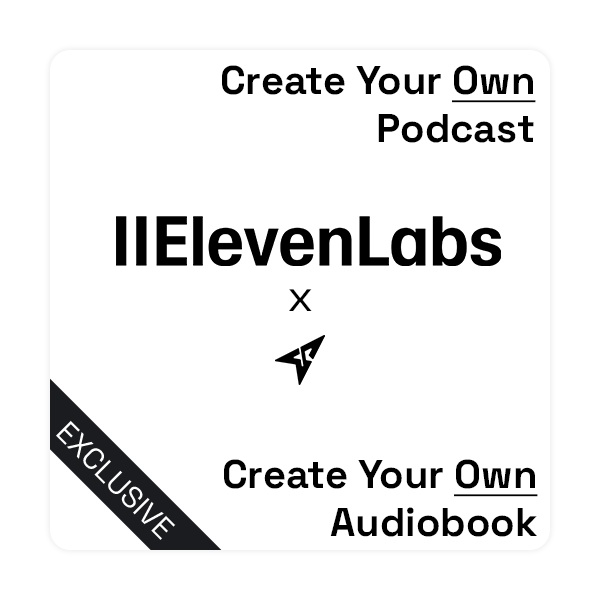Arabella: Welcome to averstance Take. My name is Arabella, and with me is a familiar voice, Jessica. Oh my God, Jessica, it's great to have you here. How was your work? It's great we can catch up again later.
Jessica: Hi, Arabella. It is going great. I have freed up some time on my schedule so that I can join you here. So Margot will be busy? I hope she can come back soon. Anyways, How are you guys? You look fantastic today.
Arabella: We're discussing Quantum Accountability by Kelley and Kevin Kremer. They start with a feeling I think many people can relate to: feeling stuck, unfulfilled, and like a victim of circumstances you can't control.
Jessica: I'm with you so far. That feeling is familiar. But where do the Kremers say that feeling comes from?
Arabella: They argue it stems from negative mindsets that let you dodge accountability. The core idea is that your mindset—which they define as a combination of your thoughts, feelings, beliefs, virtues, and attitudes—is what shapes your perceptions, your actions, and, ultimately, your life's circumstances.
Jessica: Okay, so it's about mindset. I can get on board with that. But why call it “Quantum” Accountability? It sounds lofty. Are we talking about physics?
Arabella: Not in the literal, scientific sense. The Kremers use “quantum” to refer to the unseen forces that shape our lives. These are the invisible aspects of your mental world: your thoughts, beliefs, feelings, and so on. The practice of quantum accountability, then, is being responsible not just for your physical actions but for the state of this internal, mental world. The argument is that these invisible elements are the foundation for creating the life you want. By taking responsibility for them, you can build a positive mindset, take meaningful action, and ultimately pursue your purpose.
Jessica: So, it's about taking responsibility for things you can't even see? That sounds incredibly difficult. How can you be accountable for a subconscious thought or a feeling that appears out of nowhere?
Arabella: That's the central challenge they address. They start with managing your thoughts. The authors suggest that your thoughts, both conscious and subconscious, actually shape your reality. They give the example of worrying about forgetting answers on a test; that very worry can create anxiety that makes you forget the answers.
Jessica: That makes sense, but they admit it's not easy to control your thoughts. You can't just order an idea to go away. So, what's the practical step?
Arabella: They recommend becoming aware of your thoughts so you can encourage the productive ones and discourage the harmful ones. A key tool they suggest is daily journaling. You write about your achievements, your obstacles, potential solutions, and your to-do list. Journaling also involves offloading anxiety by writing down your worries and struggles. Then, you actively work to replace negative self-talk with positive affirmations. The way you talk about yourself directly impacts how you think and feel.
Jessica: I see. It's not about stopping thoughts but about observing and replacing them. The book also brings in Rhonda Byrne's work in The Secret. How does her perspective compare?
Arabella: Byrne agrees that controlling thoughts is crucial because they shape reality. But she adds another layer, explaining that thoughts have frequencies, and the thoughts you have attract outcomes of the same frequency. Thinking about making friends attracts friends while thinking about being lonely attracts loneliness. She also supports using positive affirmations. For moments when thoughts are overwhelming, Byrne suggests recognizing the spiral, taking a moment to reflect on the thoughts and feelings, and practicing meditation to regain control.
Jessica: Okay, let's move on to beliefs. The authors suggest that beliefs are simply thoughts repeated over time until they become our truths. These beliefs, in turn, shape our happiness and success. The example they use is that someone who believes “I'm never good enough” will avoid goals, while someone who believes “I can achieve anything” will persist and grow. But they also say these beliefs are hard to change because they often form in childhood during traumatic situations. That sounds like a massive hurdle.
Arabella: It is, but they offer a path to change them in adulthood. It begins with questioning the validity of your current beliefs. You must consciously let go of those that are counterproductive and build upon those that are more effective. Again, they recommend using positive affirmations to counteract negative beliefs, such as replacing “I'm never good enough” with “I can achieve anything I set my mind to.” The key is to consistently repeat these new affirmations and, crucially, to follow through with actions that reinforce the new belief. For instance, to strengthen the belief that you can achieve anything, consider taking on new projects.
Jessica: Tony Robbins mentions perspective in Awaken the Giant Within. His take on belief formation is different.
Arabella: It is. Robbins links beliefs to our basic instinct to avoid pain and seek pleasure. Our brain associates experience with pain or pleasure, and these associations shape our beliefs. For example, if going places alone makes us feel uncomfortable—a pain association—we might create a belief that it's bad to do so. Robbins provides a method to challenge these beliefs that complements the Kremers' advice. He advises identifying your beliefs and their justifications and then asking if those justifications are truly valid. Where did you learn them? Is the source trustworthy? What are the consequences of holding on to the belief versus letting it go? Then, like the Kremers, he suggests reinforcing helpful beliefs by acting in ways that prove them true.
Jessica: That's a very systematic way of dismantling a belief. What about feelings? The Kremers describe this cyclical process: our thoughts create physiological responses, or emotions, which we then interpret as feelings. These feelings then shape our thoughts, which in turn manifest our reality.
Arabella: Exactly. They use the example of being at a party where you don't know anyone. The thought “I won't fit in” arises. The feeling creates a physical response—your heart rate increases, and you feel uneasy. You label that sensation as the feeling of “anxiety.” This feeling leads to more anxious thoughts, such as “Everyone else knows each other,” and you end up standing alone, making your initial thought a reality.
Jessica: The problem they identify is that we tend to use a minimal vocabulary of feelings—like fear, joy, or sadness—because they're familiar and feel predictable, which gives us a sense of safety. However, this leads us to mislabel our emotions and create unnecessary negative experiences.
Arabella: Precisely. In the party example, the increased heart rate might be due to uncertainty, but you label it as fear because it's a familiar feeling. This interpretation then stops you from mingling. To counter this, the Kremers advise getting in touch with your feelings more. First, identify the triggers for your feelings and find ways to avoid or mitigate their impact. You could use positive self-talk, such as, “I'm going to enjoy myself and make new friends.” Second, pause to identify the raw emotion before assigning a label to it.
Jessica: So it's about expanding your emotional vocabulary, to be more precise. The book mentions an “emotion wheel” as a tool for this. How does that work?
Arabella: An emotion wheel is a visual tool that breaks down primary emotions into more nuanced states. You find the closest emotion on the wheel to what you're feeling. Then you can determine if it's a more intense version, which would be closer to the center of the wheel, or a less intense one, farther from the center. You can also determine if it's mixed with another emotion by examining the feelings between the spokes. For example, you might discover that what you initially labeled as “anger” is annoyance, which is less intense, or contempt, which is anger mixed with disgust.
Jessica: That level of detail seems useful. Moving on to taking accountability for actions. After getting your mental world in order, the authors say you can take meaningful action. They start with decisions. They claim that our attitudes and feelings significantly influence our choices, so we need to be accountable for those mental states to make informed decisions.
Arabella: Yes, and they offer guidelines. First, determine whether you should make a decision alone, with your support system, or with the help of experts. Don't overestimate your abilities. Second, allocate the appropriate amount of time to make the decision. They note that it's often better to act swiftly rather than dwell on an issue, but some issues do require more research and reflection.
Jessica: Annie Duke's perspective, as presented in “Thinking in Bets,” is discussed here. She places more emphasis on beliefs than on attitudes and feelings when it comes to decision-making.
Arabella: She does, but she also agrees with the Kremers that beliefs are what shape those attitudes and feelings. Duke also supports the idea of making decisions with others and suggests forming a “decision pod” of people who volunteer to help. Because they genuinely want to help, they can effectively help you identify your blind spots. She also has a technique called “time-traveling” to avoid impulsive, emotion-driven decisions, where you consider the long-term effects of a choice.
Jessica: What about accountability for our roles in life—parent, employee, friend, and so on? The Kremers argue that if you lack mental accountability, you get pushed into undesired roles that make you unhappy.
Arabella: Correct. This unhappiness leads to a desire to escape responsibility, which results in destructive behaviors. They say you have to choose and manage your roles actively and, very importantly, draw boundaries between them to ensure you're prioritizing the right things. An example would be if you receive a promotion but feel more fulfilled in your current role. In that case, you should inform your boss that you wish to stay. Or, you create a boundary by putting your laptop away when the workday ends to protect your parental role.
Jessica: But Stephen R. Covey, in First Things First, seems to disagree with this idea of creating boundaries between roles. He thinks it's impossible.
Arabella: He does. Covey argues that you're still a parent even when you're in your business-owner role. Believing you can only be one at a time contributes to a scarcity mindset, not an abundance one. Instead of creating boundaries, Covey recommends balancing your roles by seeing how they overlap and connect. He also says people are most unhappy when they feel one role takes time away from others, not necessarily because they find themselves trapped in an undesired role.
Jessica: That makes more sense. The roles are always there; it's about integration, not separation. Roles tie into time management. The Kremers suggest that you should perceive time in a healthy way, not as infinite, which can lead to procrastination. Their advice is to plan your time by first designating it for the most important things, such as relationships and health, then secondary priorities like career, and finally, lesser tasks.
Arabella: And Covey offers a more structured model for that: ranking tasks by importance and urgency into four zones. Zone 1 is for critical and urgent matters that require your immediate attention. Zone 2 is for essential but not-urgent issues, which you should work on regularly to keep them from becoming urgent. The Covey matrix model recommends delegating tasks in Zone 3—the urgent but unimportant ones. For Zone 4 tasks, prioritize the important and urgent ones.
Jessica: Delegating Zone 3 tasks—such as hiring someone to clean your house —seems like a practical way to free up time for what truly matters. Let's touch on the final part of the book—relationships and purpose. The Kremers say achieving your full potential requires looking outward and being accountable for how you treat others.
Arabella: Yes, and for that, they say you must develop emotional intelligence or EI. They break EI down into five components: self-awareness, self-management, motivation, empathy and compassion, and social skills.
Jessica: Self-awareness is the foundation. It's about understanding your emotions and how they influence your behavior. They say it's the first step to changing your behavior for the better. How do they suggest fostering it?
Arabella: By understanding your triggers. You need to understand what triggers your emotions and behaviors so you can take responsibility for your responses instead of blaming others. For example, you have to acknowledge that if your partner going out with friends triggers anxiety in you, it doesn't give you the right to be angry with them because they haven't done anything wrong. Self-awareness is also the foundation of forgiveness, which is considered essential for maintaining a healthy mindset and fostering positive relationships.
Jessica: And finally, what about this idea of a life purpose? That can feel like a vast and intimidating concept to grasp.
Arabella: The authors suggest that you must identify your life purpose, which is a journey that spans six main areas of life: relationships, time, self, spirituality, finances, and career. Following it is crucial because it provides a unique sense of fulfillment. To find it, they suggest taking steps such as identifying your passions, considering your unique skills, reflecting on your virtues, and thinking about how you can help others.
Jessica: But then they introduce another, even more abstract concept: the “Quantum Purpose.” What is that, and how is it different from a life purpose?
Arabella: Your life purpose is the impact you make on Earth. Your Quantum Purpose, according to the Kremers, is the spiritual meaning for your soul's existence. They explain that they believe your soul chose to be incarnated on Earth to learn spiritual lessons that help it understand its oneness with the universe and evolve. Learning these lessons is your Quantum Purpose.
Jessica: I have to be honest; that part sounds incredibly speculative. The idea that my soul “chose” to be here to learn lessons is a giant leap of faith. It shifts away from the more psychological and actionable advice in the rest of the book to something much more spiritual, which may not resonate with everyone.
Arabella: I understand the skepticism. They frame it as the peak of accountability. They argue that embracing this spiritual growth is essential for fulfilling both your life purpose and this Quantum Purpose. This spiritual connection sparks compassion, responsibility, and acceptance, which ultimately culminate in what they call Quantum Accountability. It's the final piece that ties all the other elements of accountability—for your mind, your actions, and your relationships—together into a complete philosophy for living a fulfilled life.
Jessica: You always make me feel good after every conversation. I hope you feel the same way, too, guys. Enjoy your day. Goodbye, averstance community!
Arabella: Bye, everyone; tune in once again for another episode of averstance Take. Averstance community, you are the best. Magnify the unheard voice and assert your stand! Take Care!




